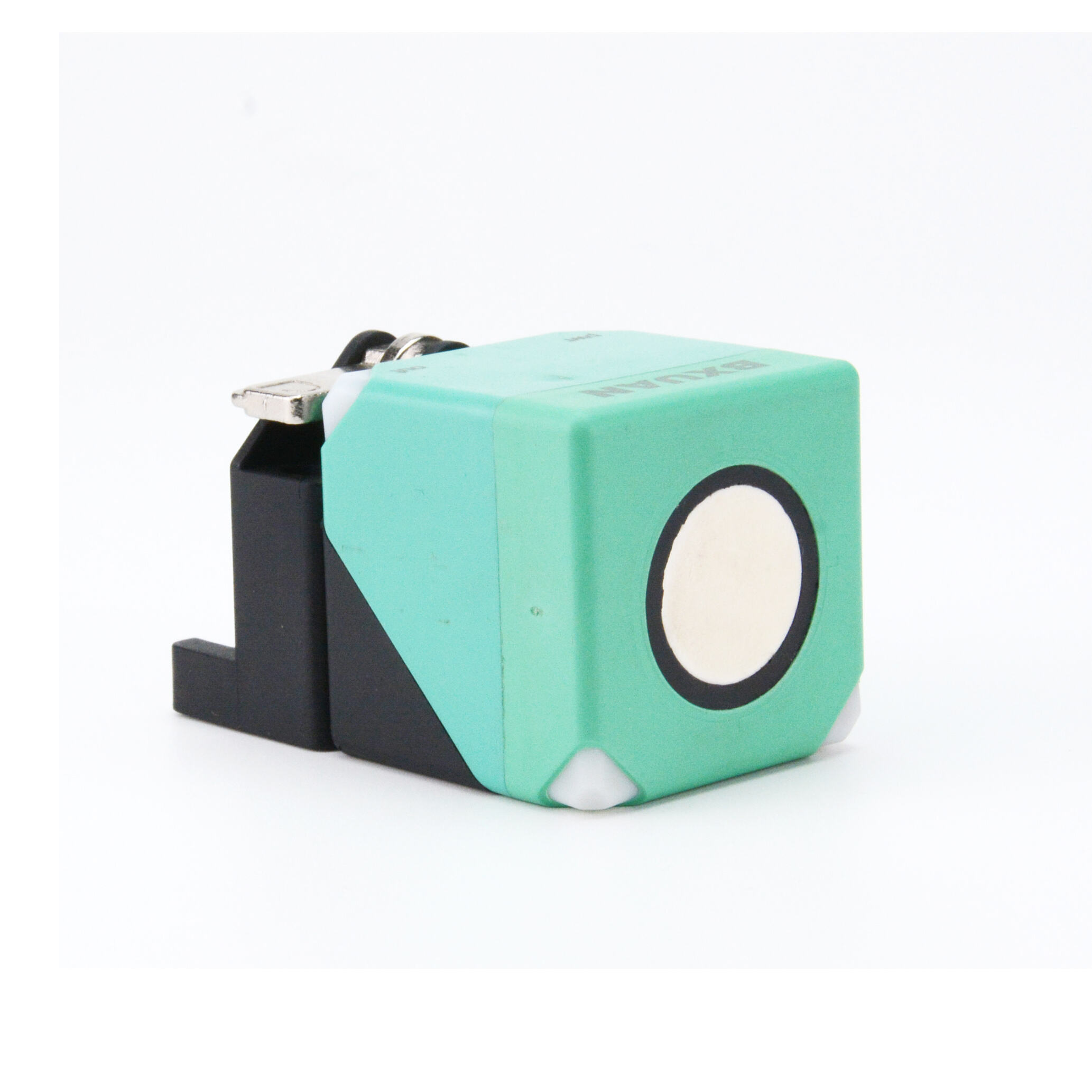Optical sensors have revolutionized modern technology by providing precise, non-contact detection and measurement capabilities across countless applications. These sophisticated devices utilize light-based technologies to detect changes in their environment, offering unparalleled accuracy and reliability in industrial automation, consumer electronics, and scientific instrumentation. The importance of optical sensors continues to grow as industries demand more efficient, precise, and intelligent sensing solutions for complex operational challenges.

Fundamental Principles of Optical Sensing Technology
Light-Based Detection Mechanisms
Optical sensors operate on the fundamental principle of light interaction with target objects or environmental conditions. These devices emit light from a source, typically LEDs or lasers, and measure the characteristics of light that returns to a receiver or photodetector. The interaction between light and matter provides valuable information about object presence, distance, color, transparency, and surface properties. This light-based approach enables non-contact sensing, which eliminates wear and mechanical interference common in traditional mechanical sensors.
The sophisticated detection mechanisms employed by optical sensors include reflection, transmission, refraction, and absorption principles. Reflective sensors measure light bounced back from target surfaces, while transmissive sensors detect light interruption between emitter and receiver. Advanced optical sensors can distinguish between different materials based on their unique optical signatures, enabling precise identification and classification in complex industrial environments.
Signal Processing and Output Generation
Modern optical sensors incorporate advanced signal processing algorithms to convert raw optical data into meaningful electrical outputs. These systems filter noise, compensate for environmental variations, and provide stable output signals regardless of ambient lighting conditions. The integration of digital signal processing enables optical sensors to adapt automatically to changing operational parameters while maintaining consistent performance standards.
The output generation capabilities of contemporary optical sensors include analog voltage signals, digital switching outputs, and communication protocols for integration with control systems. This versatility allows seamless integration into existing automation infrastructure while providing the flexibility needed for future system expansions and upgrades.
Industrial Applications and Manufacturing Excellence
Automation and Process Control
Industrial automation relies heavily on optical sensors for precise process control and quality assurance throughout manufacturing operations. These sensors enable real-time monitoring of production lines, detecting product presence, positioning, and quality parameters without physical contact. The non-intrusive nature of optical sensing prevents contamination and mechanical wear while maintaining high-speed operation necessary for modern manufacturing throughput requirements.
Advanced optical sensors provide critical feedback for robotic systems, conveyor controls, and automated assembly processes. Their ability to detect minute variations in product characteristics enables immediate corrective actions, reducing waste and ensuring consistent quality standards. The integration of optical sensors in manufacturing environments has significantly improved operational efficiency while reducing labor costs and human error.
Quality Inspection and Defect Detection
Quality control applications represent one of the most valuable implementations of optical sensing technology in manufacturing environments. These sensors can detect surface defects, dimensional variations, color inconsistencies, and material impurities with exceptional precision. The high-resolution capabilities of modern optical sensors enable detection of defects invisible to human inspection, ensuring superior product quality and customer satisfaction.
Optical sensors used in quality inspection systems can operate at high speeds while maintaining accuracy standards essential for mass production environments. Their ability to generate detailed reports and statistical data supports continuous improvement initiatives and helps manufacturers optimize their processes based on real-time quality metrics.
Consumer Electronics and Smart Device Integration
Smartphone and Mobile Device Applications
Consumer electronics heavily depend on optical sensors for user interface functionality and environmental adaptation. Smartphones utilize ambient light sensors to automatically adjust screen brightness, proximity sensors to disable touchscreens during calls, and advanced optical sensors for facial recognition and augmented reality applications. These implementations demonstrate how optical sensing technology enhances user experience while optimizing device performance and battery life.
The miniaturization of optical sensors has enabled their integration into increasingly compact consumer devices without compromising performance. Modern smartphones incorporate multiple optical sensors working in coordination to provide seamless user interactions and intelligent device behavior based on environmental conditions and user preferences.
Automotive Safety and Navigation Systems
Automotive applications of optical sensors have transformed vehicle safety systems and autonomous driving capabilities. These sensors enable automatic headlight control, rain detection for windshield wipers, and advanced driver assistance systems including collision avoidance and lane departure warnings. The reliability and rapid response times of optical sensors make them ideal for critical safety applications where human lives depend on accurate sensing performance.
Modern vehicles incorporate sophisticated optical sensor arrays for parking assistance, blind spot monitoring, and autonomous navigation systems. The integration of optical sensing technology with artificial intelligence algorithms enables vehicles to interpret complex traffic situations and make intelligent decisions for enhanced safety and convenience.
Scientific and Medical Instrumentation
Laboratory and Research Applications
Scientific research facilities rely on precision optical sensors for analytical instrumentation and experimental measurements. These sensors enable spectroscopic analysis, particle counting, fluorescence detection, and precise positioning in microscopy applications. The exceptional sensitivity and stability of laboratory-grade optical sensors support breakthrough research across multiple scientific disciplines including chemistry, biology, and materials science.
Research applications benefit from the non-invasive nature of optical sensing, which allows observation of sensitive samples without contamination or interference. Advanced optical sensors can detect single photons and measure minute changes in optical properties, enabling scientists to study phenomena previously impossible to observe directly.
Medical Diagnostics and Patient Monitoring
Medical applications of optical sensors have revolutionized patient care through non-invasive monitoring and diagnostic capabilities. Pulse oximeters utilize optical sensing to measure blood oxygen saturation, while optical coherence tomography provides detailed internal imaging without radiation exposure. These applications demonstrate how optical sensors contribute to improved patient outcomes while reducing healthcare costs and procedural risks.
Advanced medical optical sensors enable continuous patient monitoring in critical care environments, providing real-time data on vital signs and physiological parameters. The integration of optical sensing technology with telemedicine systems allows remote patient monitoring and early detection of health complications, supporting preventive healthcare initiatives.
Environmental Monitoring and Safety Systems
Air Quality and Pollution Detection
Environmental monitoring systems utilize optical sensors to detect air pollutants, greenhouse gases, and particulate matter with high precision and selectivity. These sensors support environmental protection initiatives by providing real-time data on air quality conditions and pollution sources. The ability of optical sensors to operate continuously in harsh environmental conditions makes them ideal for long-term monitoring applications in urban and industrial areas.
Advanced optical sensors can differentiate between various types of pollutants and provide quantitative measurements essential for regulatory compliance and environmental impact assessments. Their integration with data logging and communication systems enables comprehensive environmental monitoring networks that support public health and environmental protection policies.
Fire Detection and Safety Applications
Fire safety systems rely on optical sensors for early detection of smoke, flames, and hazardous gas emissions. These sensors provide faster response times compared to traditional thermal detectors while reducing false alarms through sophisticated signal analysis algorithms. The reliability of optical sensors in life safety applications has made them standard components in commercial and residential fire protection systems.
Modern fire detection systems incorporate multiple optical sensing technologies working together to provide comprehensive coverage and accurate threat assessment. The integration of optical sensors with building automation systems enables coordinated emergency responses including evacuation procedures and fire suppression system activation.
Future Developments and Emerging Technologies
Artificial Intelligence Integration
The convergence of optical sensing technology with artificial intelligence represents a significant advancement in sensor capabilities and applications. Machine learning algorithms enhance the performance of optical sensors by enabling adaptive signal processing, predictive maintenance, and intelligent decision-making based on sensor data patterns. This integration supports the development of truly intelligent sensing systems that can learn and adapt to changing operational conditions.
AI-enhanced optical sensors can perform complex pattern recognition tasks and provide predictive analytics for preventive maintenance and optimization strategies. The combination of optical sensing precision with artificial intelligence processing power opens new possibilities for autonomous systems and intelligent infrastructure management.
Quantum Sensing and Advanced Materials
Emerging quantum sensing technologies promise to revolutionize optical sensor performance through unprecedented sensitivity and precision capabilities. These advanced systems utilize quantum mechanical properties to achieve measurement accuracies previously impossible with classical optical sensors. The development of new optical materials and nanostructures continues to expand the capabilities and applications of optical sensing technology.
Next-generation optical sensors incorporating advanced materials and quantum technologies will enable new applications in fundamental physics research, ultra-precise navigation systems, and revolutionary medical diagnostic techniques. These developments position optical sensors at the forefront of technological advancement across multiple industries and scientific disciplines.
FAQ
What makes optical sensors more reliable than mechanical sensors?
Optical sensors offer superior reliability because they operate without physical contact with target objects, eliminating mechanical wear and reducing maintenance requirements. They provide consistent performance across millions of operating cycles while mechanical sensors may suffer from contact degradation and calibration drift over time.
How do optical sensors perform in harsh industrial environments?
Modern optical sensors are designed with robust housings and advanced signal processing to operate reliably in challenging conditions including extreme temperatures, vibration, dust, and electromagnetic interference. Many industrial optical sensors feature IP67 or higher protection ratings and can function in temperatures ranging from -40°C to +70°C while maintaining accuracy specifications.
Can optical sensors distinguish between different materials?
Yes, advanced optical sensors can differentiate between various materials based on their unique optical properties including reflectance, absorption, and transmission characteristics. Some sensors utilize multiple wavelengths or spectroscopic techniques to identify specific materials and provide detailed composition analysis for quality control applications.
What are the main advantages of optical sensors in automation systems?
Optical sensors provide non-contact operation, high-speed response, excellent precision, and long service life in automation applications. They offer easy integration with control systems through various output options and communication protocols while requiring minimal maintenance compared to alternative sensing technologies. Their versatility enables use across diverse applications from simple presence detection to complex quality inspection tasks.

